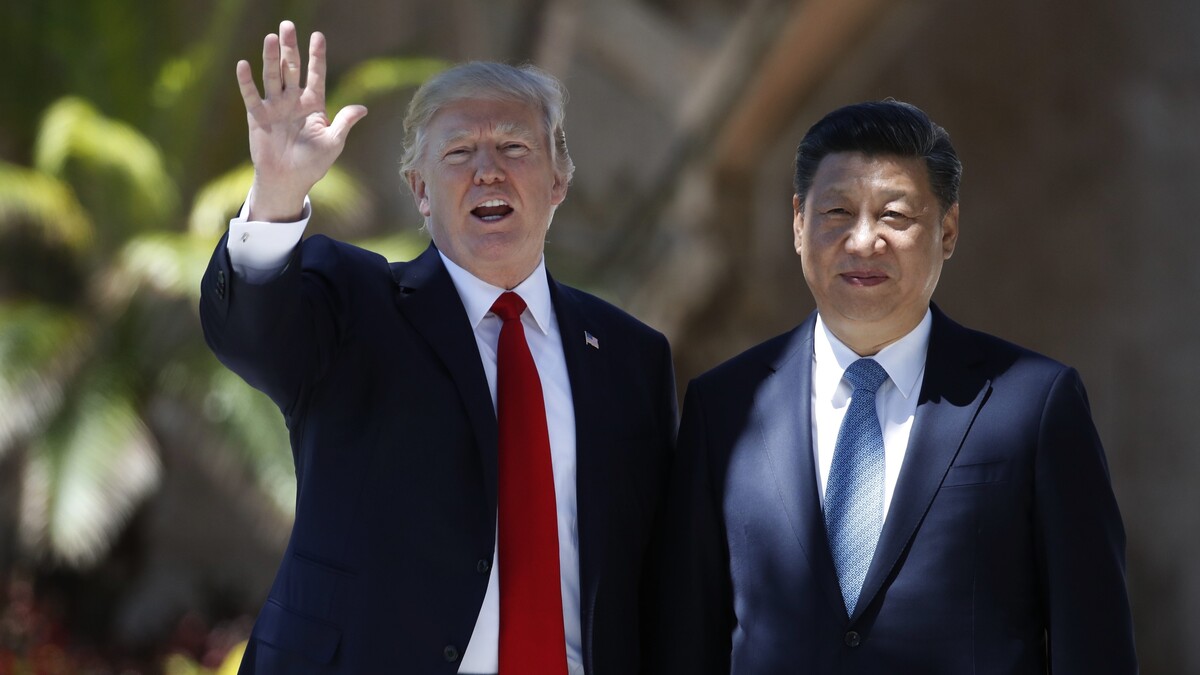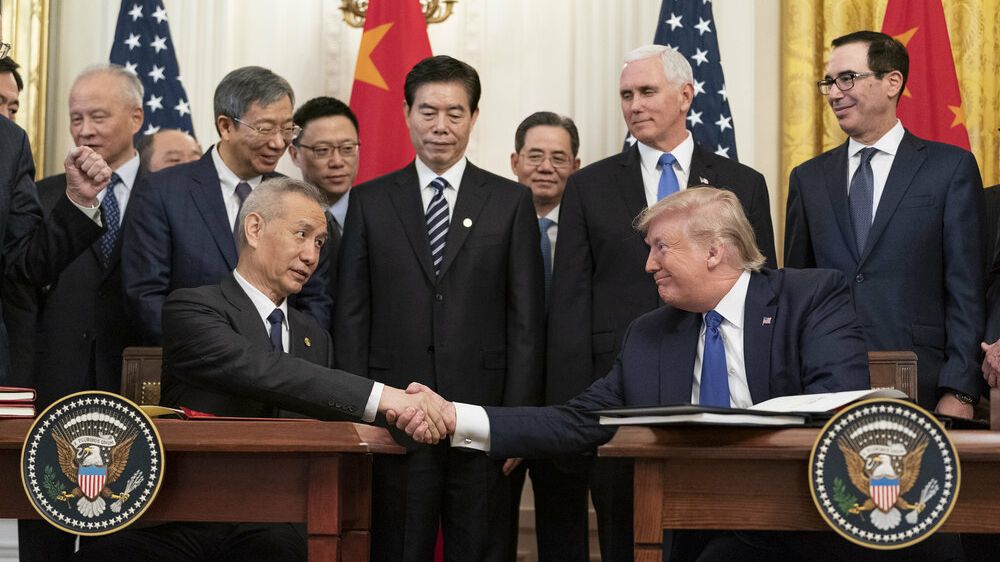Vice PM Liu He is expected to sign the Phase I trade deal with his US counterparts (potentially even with President Trump) in Washington on January 15. We think it would be a mistake, however, for global investors to cross bilateral trade tensions off their lists of market risks for 2020.
We see the Phase I deal as a rushed and incomplete response to domestic political demands. In other words, this deal represents a tactical engagement that will allow both sides to focus on presiding domestic issues (and the US election), not a durable compromise on contentious trade and macro issues.
Below we provide further background on the deal and why it may fail, and we outline factors that will influence the China US relationship in months to come.
How the interim US-China trade deal happened
The Chinese side wanted a truce for three reasons.
- First, 2020 represents an important triple deadline for President Xi: It is the last year of the current Five-Year Plan, the deadline for his commitment to double per capita GDP compared to 2010 levels and the end-point for his commitment to eradicate poverty in China. Trade tensions and related domestic macro shocks made these social deliverables more difficult.
- Second, Beijing wanted to contain the spread of anti-Chinese sentiment in DC: The US executive branch bureaucracy and US Congress have become more hostile towards China on non-trade issues, and Beijing wants to contain the spread of such sentiment in Washington. This has become more urgent given the likelihood of a landslide victory in the presidential election in Taiwan favoring incumbent Tsai Ing-wen.
- Third, Beijing wanted to curb non-food price inflation: Increased purchases of US agricultural products and US tariff reductions can help Beijing stabilize domestic food price inflation, domestic labor markets and related social sentiment.
These domestic demands required President Xi to prioritize stability over nationalism in 2020, in contrast to his previous decision to escalate tensions in May 2018.
Similarly, President Trump had his own reasons for wanting to de-escalate tensions.
- Electoral considerations: His made-for-TV trade deal in which China promises to purchase large volumes of US agricultural goods is expected to sell well with constituencies in midwestern swing states.
- Shift of focus towards national security: Putting trade tensions to the side also makes room for greater focus on a second important electoral issue: national security. The recent Soleimani assassination fits into this model. Combined, Trump can campaign on a platform that is tough on China and national security, and committed to improving US prosperity.
Why the interim US-China trade deal may fail
The trade deal is not a structural solution to bilateral imbalances and frictions. It is merely a smokescreen that allows for a tactical disengagement while Xi and Trump shift focus to domestic issues. This leaves areas of dissatisfaction for both sides, which implies future challenges during the implementation process.
Two important risks include:
- The language and commitments in this deal will probably be subject to differing interpretations by both sides. As of today, the Chinese side has not officially confirmed specific purchase commitments, maintaining that such purchases must be “market based” meaning they have to be rooted in real domestic demand, and that US products must be “competitive”, meaning China will not pay a premium on the prices of US agricultural and energy products. Our interpretation of this stance is that China wants a form of non-binding purchase commitment. For its part the US has disclosed confusing purchase targets as well: total imports of US goods and services over the next two years should exceed China’s imports in 2017 by no less than $200 billion. China purchased $130 billion in goods and $56 billion in services from the US in 2017. According to US statements, this implies doubling exports to China compared to 2017 levels by 2022. China’s interpretation, however, sounds more like “reversion to trend” in that raising annual purchase amounts to US$ 200 billion is consistent with pre-trade war growth rates. Additionally, neither side has confirmed when the tariff rollbacks will begin and at what pace. In our view, such vague language reflects a stalemate rather than a breakthrough on trade, and raises the risk that tensions could flare up again during the implementation process.
- The deal includes snap-back tariffs. Perhaps more importantly, in the dispute resolution section of the preliminary draft, both sides reserve the right to reimpose tariffs, stating that the dispute resolution mechanism allows each party to engage in proportionate action that it deems appropriate. Related dissatisfaction from the Chinese side was on display when Liu He chose to skip the December 13 press conference, leaving it to lower-level colleagues to confirm agreement on the Phase I deal. Liu had even given a speech earlier that day to financial regulators and bankers and was not in seclusion.
Factors that might derail or progress trade talks
In the near term, there are several signposts that we think will confirm or reject our thesis that the Phase I deal is a tactical disengagement that could unravel.
- How important will the Chinese delegation be when Liu He travels to DC? First, if Liu He travels to Washington with the rest of his negotiating team in tow, this would suggest that Phase II talks could begin sooner than expected. But, if Liu travels with only a small retinue, then we would take this a sign of vulnerability for the Phase I terms.
- What title will Liu He travel under? If he is reinstated as a “special envoy”, we would take this as a positive signal that Washington and Beijing will continue close engagement with the personal imprimatur of President Xi. If he simply arrives as a Vice Premier, then this, too, would be only a weak signal of support for Phase I. Our base case is Beijing has no intention to make any substantive commitments on Phase II talks until after the US presidential election. This includes areas such as SOE subsidies, cybersecurity and cross-border data transfers. Moreover, we think a truly comprehensive trade deal – and even progress towards Phase II talks – would require accompanying bilateral cooperation on geopolitical and security issues, something that appears unlikely.
- What progress will be made on trade and investment legislation at the NPC in March? For example, in 2019, the NPC’s expedited passage of the China’s Foreign Investment Act and the State Council’s issuance of Guidelines on Intellectual Property Protection were constructive for the Phase I deal. Accordingly, if the NPC puts up additional measures in March, this will be supportive of the Phase I framework.
- Will Trump make a state visit to Beijing in April? The US side appears to want to maintain pressure on China during the implementation phase by announcing that Trump will visit Beijing to kick-off Phase II right away. Alternative dates could be sometime in July before the Tokyo Olympic Games. If Beijing is willing to receive Trump in full campaign mode this summer, this should mean the political leadership is willing to open the door to initial Phase II discussions to placate Trump. This year will also be Beijing’s recognized 70th anniversary of the end of the Korean War, and could present an opening for a resumption to talks with North Korea. If Trump and XI can make progress in this direction it would give Trump something else to boast about at the Republican Convention in August.
How China’s economic growth will influence US-China relations
China’s economic growth in H1 of 2020 will increasingly resemble an early cyclical recovery with front-loaded fiscal spending from local government bonds on infrastructure, a lagged boost to corporate profits and retail sales from last year’s VAT cuts and a new personal income tax return scheme for households, and further acceleration in property completion activities as developers quicken constructions to deliver apartments that they sold in the previous pre-sale cycle.
An earlier-than-usual lunar new year may also delay more pent-up demand and industrial activities to late H1. We see a credible risk that such upside surprise from economic performance in H1 may encourage Chinese policymakers to have a second thought on implementing the Phase I trade deal and certainly would make Beijing less eager to start Phase II talk.
However, as effects from fiscal spending wane in H2, the most critical element to watch in H2 would be whether China’s manufacturing sector would fulfill the long-overdue promise of restocking.
A failure for manufacturing restocking may soften Beijing’s stance on trade negotiation. But, another potential risk for escalation of bilateral trade relation in H2 is the fact that Chinese central planners will publish their next Five-Year Plan around November, in which we have little doubt that they will emphasize the importance of strengthening SOEs and import substitute to gain an upper hand in future strategic rivalry between the US and China
Phase One deal implications for third countries
Risks and shortcomings aside, a Phase One deal may still have some profound implications for the global trade landscape.
Tariff relief may overlap with a cyclical recovery to manufacturing activity and domestic demand in China, and this would be positive for global growth sentiment. Better-than-expected important demand from China could thus substantially narrow China’s current account surplus by the end of 2020. A substantial narrowing of China’s current account surplus would suggest that it has become increasingly difficult for China to use domestic savings to sustain domestic investment growth. This would increase the urgency of attracting capital inflows for policymakers in China.
The Phase One deal may not be good news for everyone. Third countries – especially Brazil – could see net export losses even as China’s trade surplus shrinks. By our estimates, China would have to redirect at least 30% of its purchases of soybeans from Brazil to the US in order to meet purchase commitments under the Phase I deal.
About PRC Macro
PRC Macro Limited was established to develop economic information and forecasting services to fill the large analytical gaps that exist with respect to China’s political economy. This includes the development of new proprietary sources of data, new analytical models, and extensive on the ground research. Our senior team has decades of experience delivering economic insight products to global financial institutions, corporations, as well as tailoring products to client specific needs.
© The Hinrich Foundation. See our website Terms and conditions for our copyright and reprint policy. All statements of fact and the views, conclusions and recommendations expressed in this publication are the sole responsibility of the author(s).






